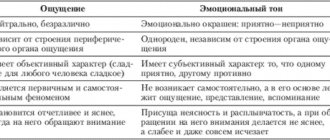Alexithymia is a psychosomatic disorder in which a person is unable to express feelings in words. Alexithymia should not be classified as a mental pathology; this is not true. The symptom is considered as a feature of the human nervous system. Mental development does not affect the formation of alexithymia; people with this diagnosis often have a high IQ level.
- Forms of alexithymia
- Symptoms
- Association with psychosomatic illnesses
- Treatment of alexithymia
Various studies say that between five and twenty-five percent of all people have some form of alexithymia. Various methods are used for research, and there is no clear scale that determines the levels of the ability to express emotions.
Causes of alexithymia
Modern experts distinguish two forms of violation: primary and secondary. Primary alexithymia is congenital and is associated with deficits in certain areas of the brain; secondary alexithymia is considered acquired. The causes of the disorder will depend on its form.
The following causes are identified for primary alexithymia:
- congenital malformations of the fetus, in particular of the brain;
- birth injuries;
- infectious processes suffered during pregnancy;
- the hereditary nature of alexithymia, that is, similar traits can be observed in close relatives.
Causes of secondary (or acquired) alexithymia:
- mental illness (ASD, schizophrenia);
- neuroses, hidden depression;
- stress, constant nervous tension;
- suffered psychological trauma;
- brain injuries, central nervous system;
- severe infectious diseases that affect the functioning of the brain and central nervous system.
Alexithymia, according to many researchers, can also arise as a result of improper upbringing: over- or under-custody, inattention to the child’s feelings. Researchers also note the influence of stereotypes accepted in society. This includes “men don’t cry” and “it’s indecent to express your feelings in public.”
Prevention
Now that we have found out what alexithymia is and how dangerous it is, we can confidently say that it is advisable to avoid this condition. The best prevention in this case is competent education, and this is an additional responsibility that falls on parents.
From an early age, a child must understand how important it is to correctly interpret his emotions, without suppressing them, but using them as an important tool of self-control. There should be no prohibitions on feelings. If you raise a child under such pressure, then in adulthood it will be very difficult for him to get rid of the habit of suppressing his own emotions.
Another important preventive measure is the development of imagination and creative thinking. This must be done both in childhood and in adulthood. Parents should encourage their children to express their feelings in every possible way, as this is the inalienable right of every person. Of course, we are not talking about teaching a child to violate discipline by demonstrating his individuality.
Main signs of alexithymia
The main signs of a violation include:
- Difficulties in understanding and verbalizing one’s own feelings;
- Tendency to loneliness. It may not appear in people with alexithymia immediately, but after some time;
- Limited imagination;
- Denial of the concept of intuition;
- Lack of bright, colorful dreams;
- Logical thinking, penchant for analysis.
However, a person with alexithymia does not necessarily have to have all of the above symptoms.
Treatment
The very first step is to accurately diagnose what form of alexithymia the patient has and how severe it is. To do this, the Toronto School of Alexithymia test mentioned above is used. Further treatment is complex. It is based on psychotherapy; additional medications can be prescribed to increase the effectiveness of treatment and consolidate the results.
The therapist's job is to teach the client how to correctly interpret their feelings and manage their emotions. This reduces the psychosomatic effect and reduces the risk of various diseases that it can cause. Quite often, to relieve internal tension, a person simply needs to learn to cry or get angry, releasing emotions, rather than holding them back.
Associated problems with alexithymia
Complications with alexithymia are very diverse. First of all, we are talking about the improper production of hormones responsible for emotions and psychosomatic diseases. These include various manifestations of allergies, gastrointestinal problems, atherosclerosis, migraines and a whole list of diseases.
Often with alexithymia, a person begins to experience problems with excess weight. Many people with this disorder become addicted to alcohol or drugs, which can easily develop into a severe addiction.
Due to the inability to understand the feelings of other people, problems of a social nature often arise: conflicts, problems at work and in personal life.
Refusal to feel
“Bed addiction” is essentially a regression to the so-called “primary sleep” - a sleep-like state characteristic of infants. This is exactly the state that heroin addicts so passionately desire to achieve. Hermit hikikomori also experience a similar process of regression. Every day this quagmire sucks in hikikomori more and more, and getting them out of it is not an easy task.
It is important to pay attention to one point here. A baby who falls asleep during feeding and wakes up to find that he has been weaned from his mother's breast will feel anxious, angry, flushed and cry.
Older babies (one to one and a half years old) also live in a world of basic emotions, such as anger, anxiety, depression or sadness. But adult hikikomori are deaf to these emotions. At first, they themselves refuse to feel anything, and then they simply lose this ability and fall into a state of alexithymia.
The relaxation stage is a kind of preparatory stage for overcoming alexithymia. Relaxation techniques can include: autogenic training, special music therapy sessions, a wide arsenal of auxiliary psycho-gymnastic techniques (such as “wax stick”, etc.).
The didactic orientation of the first stage of overcoming alexithyms is understood as follows. The inability of patients to verbalize their feelings is most clearly manifested in the difficulty of verbalizing experiences of the “here and now” type. Since the “here and now” principle is one of the main principles of non-directively oriented groups, insufficient ability to assimilate it can significantly reduce the psychocorrectional potential of the group. Because of this, one of the areas of the group’s work is training the skill of experiencing the “here and now” type, which determines the didactic orientation of the preparatory stage of work to overcome the “alexithymic barrier”. In this case, the assimilation of group norms (the list of which is given in well-known manuals on group psychotherapy, 6, 9) is, in a certain sense, the ultimate goal of group psychocorrection of alexithymic patients. Just as young children develop their senses with the help of didactic material, such as pictures, toys, split alphabet, etc., alexithymic patients at the first stage of group work also develop the ability to feel and the ability to verbalize their feelings, with “didactic material” in this case, to one degree or another, the entire methodological arsenal of group psychological correction in the appropriate modification is present.
At the same time, the basic principles of didactics are fully realized: consciousness (in the form of awareness of one’s feelings, awareness of oneself in a communication situation), visibility (the embodiment of which is a certain holographic vision in a group setting, acting as a system of mirrors providing multiple feedback), communication theory with practice (training focus of the group, for example, in the case of training the “here and now” skill).
Actualization of non-verbal methods of communication and reliance on them, being the basis for overcoming alexithymia, involves the widespread use of psycho-gymnastic techniques and techniques to the maximum extent conducive to “disinhibition” and actualization of feelings without the anxiety characteristic of patients associated with their verbalization. Not “verbalised”, not verbally formulated techniques of psycho-gymnastics seemed to prepare the ground for the subsequent verbalization of the rich and intense range of feelings released during their use. Psycho-gymnastic exercises are thus considered as a kind of “warm-up” of feelings, their relaxation and “disinhibition”. This kind of orientation also determined a certain orientation towards the perception of extralinguistic features of the verbal layer of behavior, when it is not the reasoning of the group member itself that is important, no matter how significant and confessional they may be, but the rhythmic wave that they create.
One of the indirect or bypass methods of verbalizing feelings was the “Portrait of the Artist’s Wife” technique we proposed. The group member was asked to create a verbal picture, a portrait of himself, as if he were famous and posed for the artist. The indirect nature of the technique increased its informativeness and diagnostic value. At the same time, the participants’ abilities and skills in verbalizing complex feelings and nuances of attitudes towards themselves and others were exercised and deepened. The focus on conveying in words the portrait drawn in the imagination to the maximum extent possible was supported by the desire of the group member to convey to others the essence and content of this imaginary picture as fully as possible and without distortion, so that others could “see” it to the maximum extent. The artist had a variety of “means” at his disposal: paints, frames of different sizes, arrangement objects; it was possible to create both individual and group portraits (with a child, mother, spouse, etc.).
Reliance on non-verbal means of communication creates, as it were, workarounds for overcoming alexithymia, mobilizing the internal reserves of the personality, providing support for its safe sides. The bypass nature of overcoming alexithymia in this case is determined by the fact that it is not a direct, but an indirect effect on the “defect”, which is the patient’s inability to verbalize his feelings and other alexithymic traits.
How, by stimulating nonverbal communication, can one increase the ability to verbalize feelings in psychosomatic patients? Isn't the reliance on nonverbal means of communication in the case of alexithymic patients an adaptation to the “defect”? It appears that this is not the case. On the contrary, mastering nonverbal communication is an expansion and deepening of the general range of means and methods of communication. As follows from the analysis of the group’s activities, mastery of non-verbal methods of communication, developing the ability to identify with another person, to achieve emotional consonance, ultimately led to a deepening of the empathic potential of group members, i.e. to the perception of a wider range of communicative stimuli received from other people – intonation of voice, facial expressions, body language and other “contextual factors” that complement the words. In addition, in the warm and accepting atmosphere of the group, a certain stereotype of suppression and somatization of feelings, characteristic of patients in their real lives, is initially removed.
The final stage of overcoming the “alexithymic barrier” is the actualization of “internal dialogues”. These are techniques aimed at updating hidden, incompletely conscious internal dialogues, their deployment and verbalization. This approach seems adequate to the goals of overcoming alexithymia, since its specific manifestations are based on the diffuseness and unity of experiences of somatopsychic discomfort, which presupposes the diffuseness, blurriness and unity of the internal dialogue, in which, like in a haze of fog, its two poles, two internal interlocutors, are difficult to distinguish. In this case, the internal dialogue is also repressed from consciousness due to its unsolvability in the form in which it is actually presented. Subjectively unpleasant experiences associated with internal dialogue, repressed from consciousness, contribute to an increase in general anxiety and, ultimately, chronicity of a psychosomatic illness.
To actualize the “internal dialogue”, both our own techniques and techniques taken from Gestalt therapy were used (13). They became effective only when deeply immersed in a special atmosphere of psychocorrectional contact, which presupposed an increased level of self-awareness of the group member, encouraging him to have confidential contact with the psychologist and to self-disclosure. Only in this case, the group members could hear in the speaker’s speech not just one pressing context, but their polyphony, and, as if integrating into his “internal dialogue,” from within they contributed to strengthening the contradictory moments of self-awareness.
Thus, one of the possible approaches to overcoming alexithymic traits in the personality structure of a patient with psychosomatosis in the conditions of group psychological correction consists in the implementation of three successive stages: 1) relaxation and didactic orientation, 2) reliance on non-verbal means of communication, 3) actualization of “internal dialogue” .
alexithymic traits – previous
Research and Testing
The problem of alexithymia was studied in the USA. In 1985, a psychological test was developed in Toronto to determine the level of alexithymia. The term was coined by Peter Sifneos, a Harvard psychiatrist.
Also in 1985, the test began to be used in Russia with minor modifications. The Bekhterev Psychoneurological Institute has finalized the testing and remade it to suit Russian realities and domestic psychology. In 2010, at the Moscow Research Institute of Psychiatry, the test was adapted and revised again.











